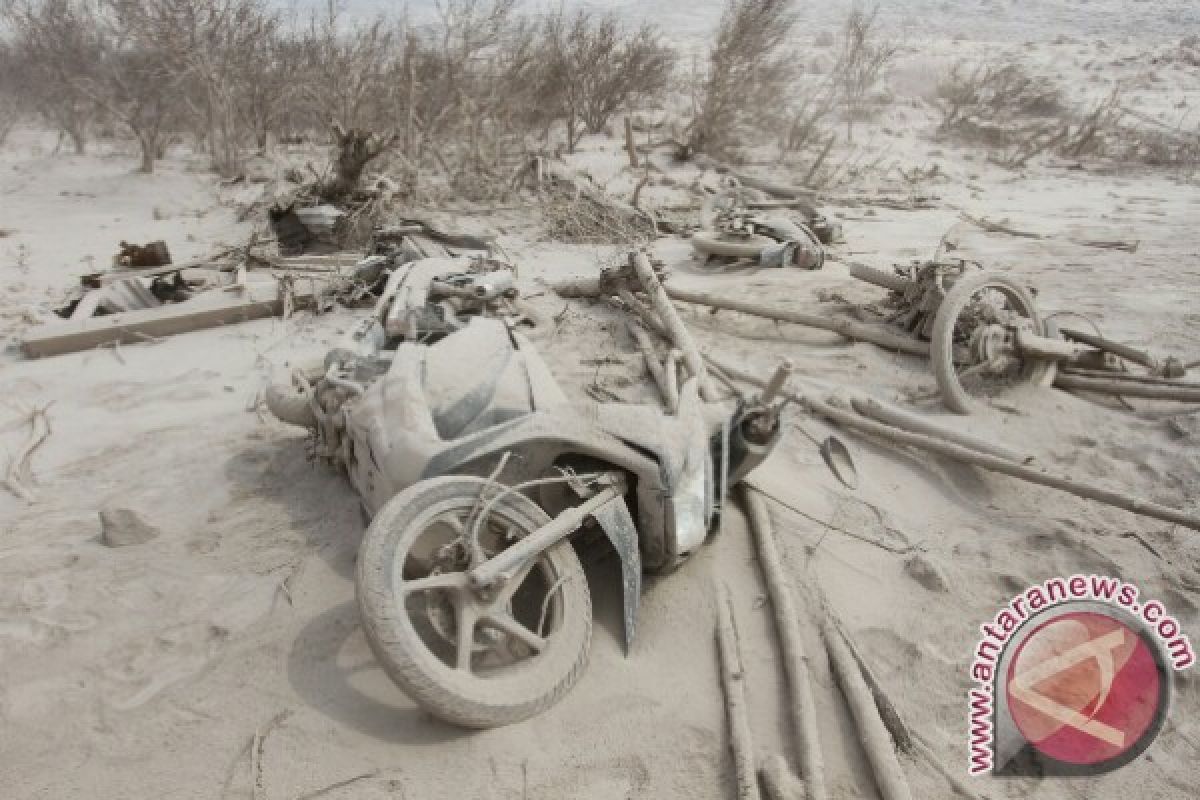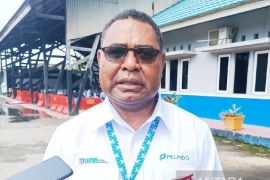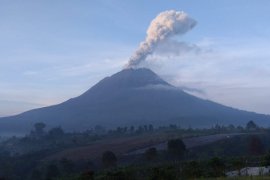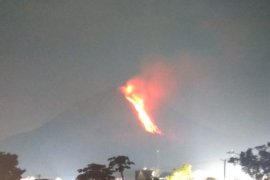Life has been far from normal for the people displaced by the eruptions of the volcano, which had been inactive for the past 400 years, prior to it rumbling back to life in 2010 and claiming the lives of two persons.
For the past five months, the refugees have been forced to live in 42 modest, but crowded refugee camps with limited access to clean water and sanitation facilities. They have lost their homes, belongings, crops, jobs, and schools. Many of the refugees are reportedly suffering from stress. Around 16 refugees died of old age or illness while staying at the camps.
The authorities raised the alert status for Mount Sinabung to the highest level in November 2013. The government has declared the area lying within a five-kilometer radius of the volcanos peak as a danger zone. No one is allowed to enter the danger zone.
But, a number of people, including women, dared to go back to their abandoned villages and farms, in order to check their belongings or to harvest crops, which were mostly destroyed by the volcanos ash.
On Saturday (Feb. 1), the erupting volcano claimed lives when it spewed clouds of hot and toxic ash, which dispersed across the Sukameriah village.
The hot clouds instantaneously killed 14 people and caused serious burn injuries to three others. One of the critically wounded victims died in the hospital on the next day, thereby increasing the death toll, so far, to 15.
"Those who died came in the path of the dark searing clouds that rolled down the mountain, just around three kilometers from the volcanos crater," Spokesman of the National Disaster Mitigation Agency (BNBP) Sutopo Purwo Nugroho stated in Jakarta, Sunday (Feb. 2).
The hot clouds were deemed very dangerous as they reached temperatures as high as 700 degrees Celsius and their flow was recorded at a speed of up to 100 kms per hour, he explained. Most of the victims were found in a three-km radius of the volcanos crater, while the hot clouds covered a radius of up to 4.5 kms from the volcanos crater.
"The death toll will likely rise, as many people are still reportedly missing and the darkness has hampered our rescue efforts," noted Lt. Col. Asep Sukarna, who led the operation to retrieve the charred corpses some three kilometers from the volcanos peak.
The rescuers believe that the death toll can further rise after some residents, who went up to tend to their crops on the volcanos slopes, failed to show up at their emergency shelters.
"We lost contact with 50 residents," remarked Benny Kaban, a local Protestant minister and aid worker. "They usually returned back to their shelters at 6 in the evening," he stated as quoted by DPA.
Among the reported fatalities were three school children and a teacher who wanted to observe the volcanos eruption closely, a journalist who was making a documentary film, a photographer, refugees wanting to check on their homes in the devastated Sukameriah village, and volunteers who wanted to rescue those traveling within the dangerous five-km radius.
A rescue team constituting the disaster mitigation agencys personnel, police, and military officers, local people and volunteers, was sent to Sukameriah to search for more victims on Saturday and Sunday.
But they could not stay for more than 20 minutes in the village located on the volcanos slope, as the mountain continued to spill over hot clouds at random intervals.
Fahmi (34), one of the rescue workers, described the situation at the location as precarious, with hot thick clouds rolling down the irate volcano.
President Susilo Bambang Yudhoyono expressed his deep sorrow upon receiving the report on the casualties.
"I am sad, as I had warned them to stay patiently at the shelters and may return to their villages only after they are safe," the president noted through his twitter account on Sunday.
In addition, President Yudhoyono instructed Syamsul Maarif, the BNBP head, to take appropriate measures to prevent the recurrence of similar incidents.
"The people must comply with the security personnel and avoid entering the danger zone. Eruption can recur any time. Be alert and anticipate the worst-case scenario," the president pointed out.
While visiting the refugees of Mount Sinabung in Karo, on January 23 and 24, President Yudhoyono outlined four key points that had to be given top priority while handling the refugees.
"We assure that we will handle the situation correctly. The district and provincial governments should be backed by the central government. Lives must be given top priority. Damaged houses can be replaced, though the lives lost cannot. So, all efforts must be made to safeguard our brothers," the President stated.
He stated that priority should also be given to improve the facilities at the refugee camps. "We have to provide good services such as food, clean water, and medical facilities to the refugees in the makeshift shelters," the President pointed out.
The third aspect that garnered significant attention of the head of state was the livelihood of the local people, including the damage caused to the agricultural areas of the local farmers as a result of the Mount Sinabung eruptions.
The other point that needed attention was the correct handling of the locals relocation. "Relocation of the people residing within a three-kilometer radius of the volcano must be carried out. Any volcano will endanger the locals living within three kilometers of its surroundings. They can cultivate land there, but their resettlement must be outside that perimeter. We should handle the cases of locals rejecting relocation with patience," he emphasized.
On a separate occasion, Forestry Minister Zulkifli Hasan remarked that his ministry has identified an area of eight thousand hectares to be used for sheltering the refugees of the Mount Sinabung eruptions.
He stated that a lot of area around Mount Sinabung is a production forest that can be used temporarily or even permanently for providing shelter to the disaster victims.
The area that can be used for the shelter is located about 21 kilometers from Mount Sinabung or six kilometers from Kabanjahe, according to the minister.
"If the National Disaster Management Board (BNPB) conducts the relocation procedure, then eight thousand hectares of land owned by the Forestry Ministry can be utilized for this noble purpose," he emphasized.
While addressing thousands of refugees at the evacuation shelter in the Kabanjahe Catholic Church, Kabanjahe, Karo, on January 24, President Yudhoyono also announced that the government will offer scholarships to the students affected by the Mount Sinabung eruptions.
"The scholarships are intended to help the students with their educational fees, as their families have suffered material losses due to the Mount Sinabung eruptions," Yudhoyono stated.
He further added that the central government will ensure that there are no school and college dropouts due to the natural disaster.
(f001/INE/a014)
EDITED BY INE
Reporter: Fardah
Editor: Aditia Maruli Radja
Copyright © ANTARA 2014












